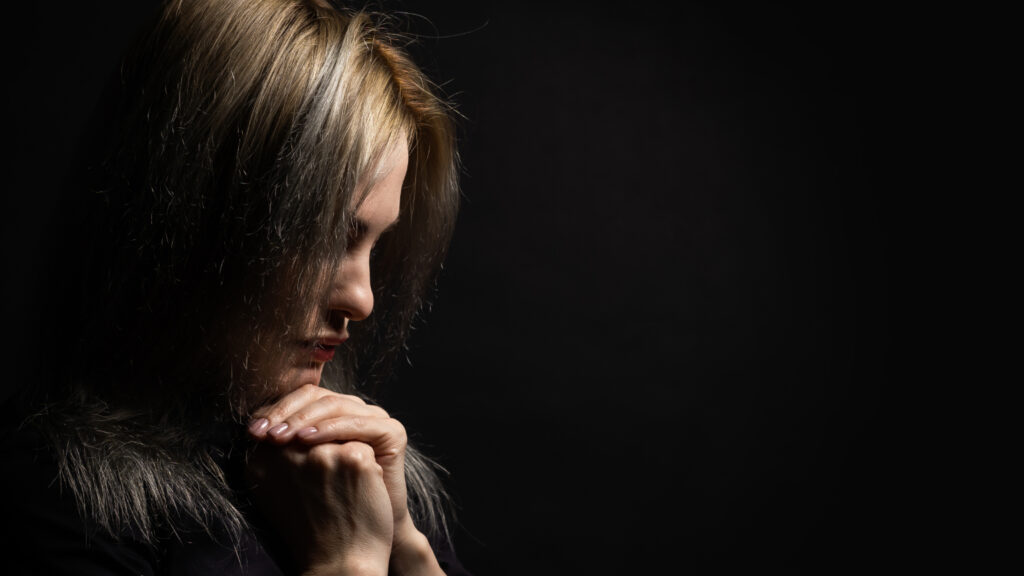- About
-
-
The SBA Pro-Life America Family
-
Issues
-
Events
-
-
- Employment
- About
-
-
The SBA Pro-Life America Family
-
Issues
-
Events
-
-
- Employment

“I thought that if the physical and emotional stress that I experienced was the norm for other women, surely someone would have told me. I thought that I was the exception. I thought that I deserved it.”
Kelly Lester believed that the extreme emotional and physical effects she suffered from taking abortion drugs must be unique to her. After all, her doctor had told her that abortion via the drugs would be “easier” physically than a surgical abortion, describing the process as similar to a heavy period. Kelly had already had a surgical abortion before and knew how hard that was. Not only that, the doctor said the abortion drugs were much cheaper – a selling point that was hard for a then-teenager to pass up.
Recounting the reality of her experience with abortion drugs, Kelly said, “It was not simple. It was not easy. It was not painless.”
Over the course of two days, Kelly endured extreme pain accompanied by bleeding and cramping. She described the pain as akin to labor. When the pain was over, Kelly had to decide what to do with the tiny baby she delivered, a horrifying reality that her doctors and medical team had not discussed with her.
“I decided to flush my baby down the toilet because I didn’t know what else to do,” she said.
Once the excruciating process was over, Kelly continued to bleed for six weeks, yet she was not offered a follow-up appointment with her doctor.
Even after the physical effects of the abortion subsided, Kelly struggled with the emotional toll. She tried to push her abortion out of her mind, even though she still struggled with severe emotional distress.
The trauma from her experience was so intense that Kelly even ended up moving from the apartment she lived in. She couldn’t bear going back into that bathroom where she had to decide if she was going to flush her baby down the toilet or not.
Throughout all this, Kelly assumed that she must have done something wrong; other women’s abortion drug experiences couldn’t be as bad as her own. Otherwise, why would doctors continue to suggest this abortion method to women?
To numb the pain, Kelly began working as a receptionist at the same abortion facility where she had her first two abortions . She hoped that she could help other women have a different experience than her own.
“I started dispensing [abortion drugs] and was told to tell women the same thing that I had heard—you’ll experience cramping and bleeding like a heavy period.”
Kelly said that the abortion center staff never scheduled follow-up appointments with abortion drug patients and discouraged them from calling. Instead, they told them to contact the emergency room or their OB-GYN if they had questions. She was also distressed by the number of women she saw in the facility’s recovery room who experienced hemorrhaging and other complications from their abortions.
Equally concerning was how the center treated the women who entered their doors. Kelly recalled her boss telling her to cut pictures out of the magazines in the waiting room so that the women would not see photos of “happy families.” She was also required to turn the heat up or the air down in the waiting room so that anyone who accompanied the women to the appointments would be uncomfortable and step outside or leave.
Kelly was told that all of these steps would make it easier for the women, but she knew otherwise.
Kelly’s final straw was seeing the number of women who were hemorrhaging in the recovery room after the abortion. While clearly under-certified for such a responsibility, as a receptionist, Kelly was tasked with managing the recovery room. She witnessed the staff routinely take these women, bleeding and still sedated, back into the procedure room to “fix what had been messed up” – then release them without disclosing what had happened to them.
Kelly recognized that not only was the child’s life ended on those days, but potentially the woman’s ability to ever become pregnant again, as well. “I was so concerned about it and saw it so often that I went back into my own files to see if it had happened to me when I had my previous abortion,” Kelly recounted. Thankfully it had not. Still, it was the breaking point for her.
“I went to the [abortion center] to help women, and I saw how we were treating them. So, I left,” she said.
After Kelly quit her job at the abortion center, she had two more abortions. Recalling her experiences, she said that abortion seemed like the only option. Each time, she felt pressure to abort her child.
“I was aware of what I was doing, but I truly felt like I had no other choice. I now realize that abortion was not the solution. In fact, it compounded the problems I already had in my life…I wish that I would have had options and that I would have known the resources that were available.”
Kelly said that when she began to value her own life, she could then find value in the lives of others.
Today, Kelly is a mom to six children. She works full time and shares her experience to encourage and support women who are facing unplanned pregnancies.

Roe v. Wade is gone. But Big Abortion has struck back with an epidemic of abortion drug use —silent, seductive, and more dangerous than any other form of abortion.
As a pro-life American, you need to learn the surprising facts that will save lives and defeat this chemical devastation.
Get your copy now.
Get Your eBook